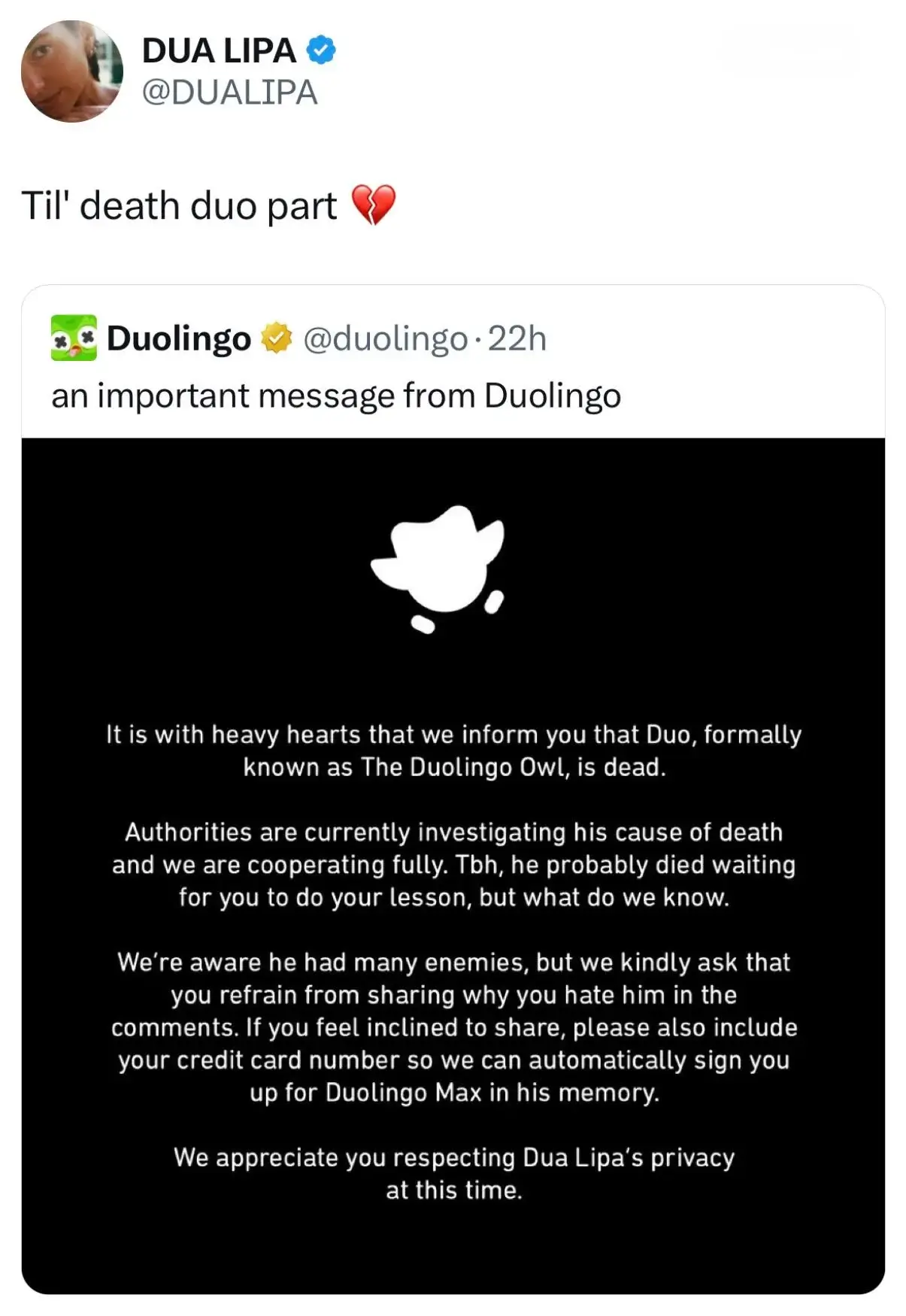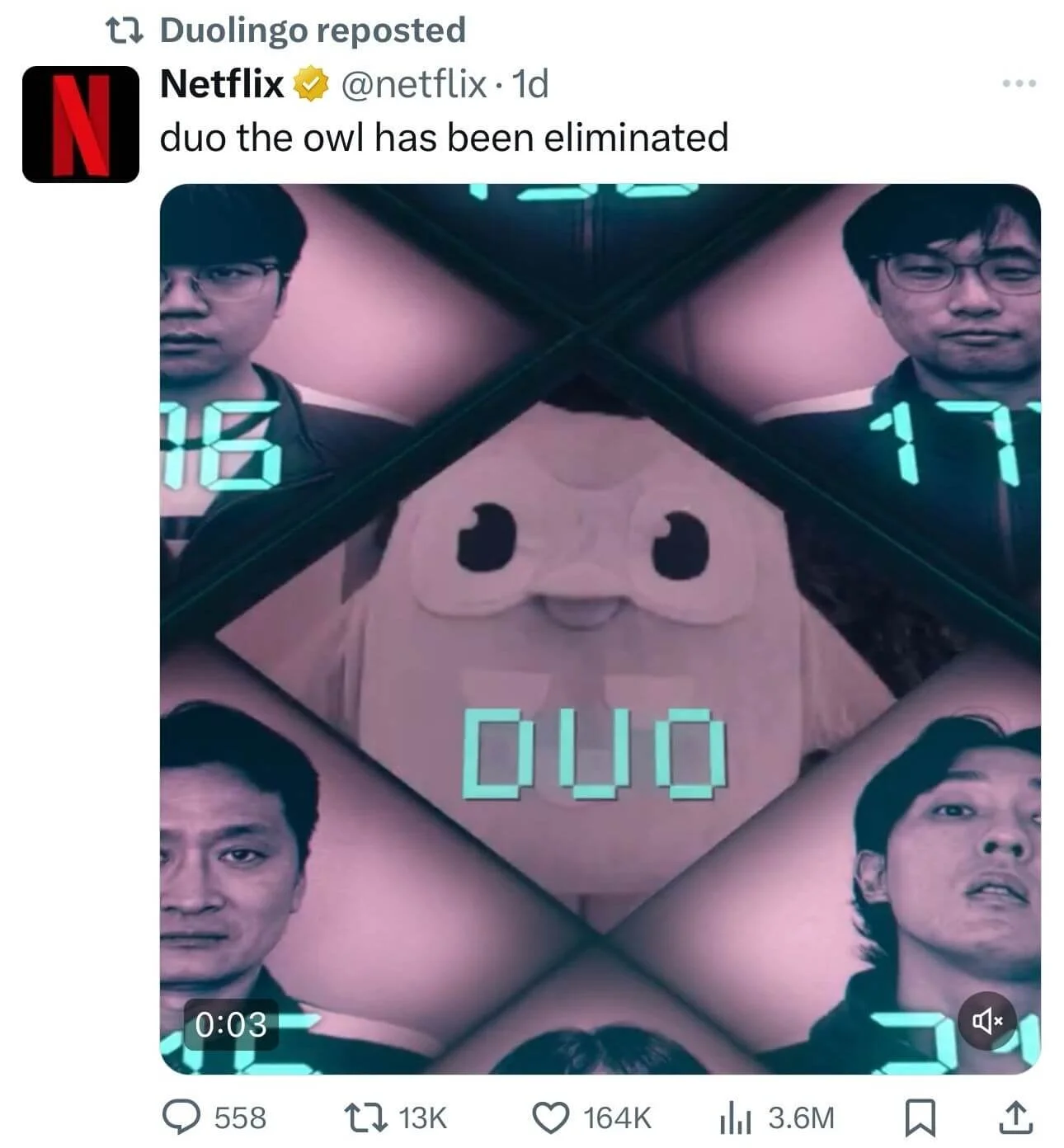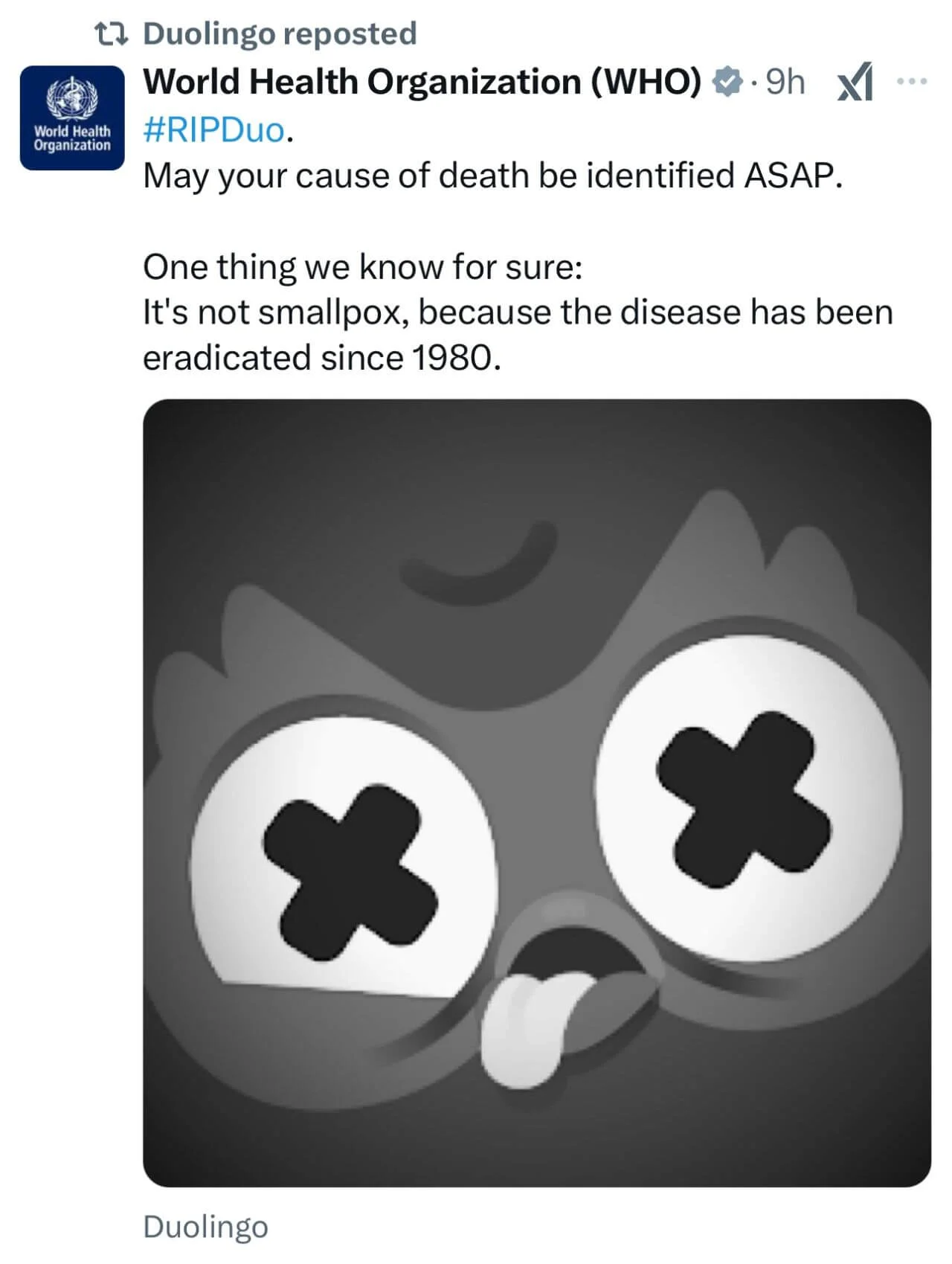The Setup: When a Language App “Killed” Their Mascot
At first glance, Duolingo’s decision to kill their owl mascot with a Tesla Cybertruck might seem utterly insane. Throw in Dua Lipa—a pop star with zero ties to language apps—and it appears like an utterly off-the-wall idea. But here’s the kicker: every bit of this madness was carefully planned.
Duolingo took three things the internet can’t get enough of—memes, Elon Musk drama, and celebrity gossip—and mixed them together to create scroll-stopping content that demanded immediate attention.. Let’s break down how they pulled it off (and how you can copy their playbook).
Why the Cybertruck Was Perfect for “Murder”
The Cybertruck isn’t just another Tesla—it’s become the symbol of Elon Musk’s evolving reputation, thanks to its delays, quirky design, and endless online mockery. Duolingo knew exactly how to play that card.
What They Did:
They got conspiracy theorists talking: “Did Elon kill Duo?” spread like wildfire on Reddit and X.
They rode the anti-Musk wave: People began comparing Duo’s “death” to the Cybertruck’s broken promises.
The results?
Android downloads jumped 38% during the campaign (according to Similarweb), iOS downloads hit their highest number of the year (15% above average, per Appfigures), and daily users increased by 22%. Additionally, Duolingo’s social media marketing strategy on TikTok drove hundreds of thousands of user-generated videos about Duo’s “death.”
How to Copy This:
Look for topics everyone’s arguing about. Check Google Trends and Reddit to see what’s sparking debate (think AI taking over jobs or TikTok bans).
Quick example: A skincare brand could claim that ChatGPT caused a product shortage, tapping into AI job theft fears. They pair the AI panic (wild) with credible support—real dermatologists endorsing their products—much like Duolingo blended humorous memes with real-world references.

The Two-Year Setup Behind the Dua Lipa Joke
Back in 2022, Duolingo’s owl began calling Dua Lipa “mommy” on TikTok. Some people laughed, others cringed. But it wasn’t just a throwaway line—it was part of a long-term plan.
The Setup:
They spent years making their owl act like Dua Lipa’s biggest, most obsessed fan.
When the owl “died,” Dua Lipa had to respond—or risk coming off as cold to 16 million fans who were invested in the story.
Her tweet (“Til’ death duo part”) garnered significant attention, aligning with Duolingo’s long-running parody interactions with her.
Smart move: They never tagged Dua or used her photos, keeping everything safe under parody laws. Take note if you’re thinking about involving celebrities in your campaigns.
The Secret Sauce: Mix Crazy with Credible
Most viral campaigns fall flat because they’re either too out-there (and seem desperate) or too safe (and end up boring). Duolingo found that sweet spot:
The Recipe: Wild Ingredients + Credible Backup
Owl funeral + Cybertruck video paired with WHO/Netflix tributes
Dark humor (“RIP Duo”) followed by Dua Lipa’s genuine response
Fan theories about the “murder” supported by real app updates

Why It Worked:
The wild elements grabbed attention, while the credible connections made it feel more than just a desperate plea for clicks. Gen Z got the joke immediately—they saw it as satire, unlike some older folks who might have taken Duo’s death literally.
How to Copy This:
When planning your next campaign, try making two lists: one for your wild ideas (quirky visuals, dark jokes) and one for your credible backup (expert quotes, solid data). Then match them up.
For example: A meditation app could claim users are meditating so deeply that they’re losing track of time. The chaos? Footage of users seemingly vanishing mid-session. The credibility? Partner with mindfulness experts to explain how deep relaxation affects time perception.
Why This Didn’t Backfire
Killing off your mascot is a risky move (RIP Mr. Peanut). However, unlike Planters’ Mr. Peanut campaign in 2020—which faced mixed reactions—Duolingo succeeded because they had spent years building an “unhinged” brand persona that resonated with Gen Z audiences.
Their Groundwork:
Built a brand persona around “unhinged” humor (e.g., Duo threatening users for skipping lessons)
Tested darker jokes with micro-influencers first (e.g., TikTok skits about Duo’s “existential crisis”)
They built a fanbase that expects—and loves—this kind of thing
How to Copy This:
Before going wild, review your past posts—have you earned the right to get this unconventional? Test your risky ideas with small groups first.
For instance, a pet food brand might try out “your cat is plotting world domination” jokes in cat-lover groups before scaling up.

Now let’s break down the exact steps that made this campaign work, even though it seemed accidental at first glance.
The Three Steps to “Accidental” Viral Success
(Spoiler: Nothing about this was actually accidental)
Step 1: Create a Mystery People Want to Solve
Duolingo didn’t spell out the Cybertruck connection; they let fans come up with their own theories (“Elon did it!” “Drake’s revenge!”). Give your audience a mystery to solve.
Step 2: Let Others Join the Fun
Rather than chasing after Dua Lipa, they created a situation where she’d want to join in. Think about how you can invite others to be part of your story.
Step 3: Listen and Adapt
When fans joked that Drake killed Duo, Duolingo went with it and added Drake references to their app. Keep an ear on what people are saying and be ready to pivot.
The Takeaway:
If you want to try something similar:
Find your “Cybertruck”—a controversial element you can use
Start planting inside jokes that will pay off later
Get wild, but keep it grounded
Final Tip:
Don’t chase viral fame. Instead, build a system for being authentically quirky. Start small, test your ideas rigorously, and let your audience help shape the narrative.
Remember: The best marketing stunts might look random, but they’re meticulously planned. Just like Duo’s “murder”—rest in peace until the next viral campaign.
Want to develop your own bold marketing playbook? CREZEMO’s strategic consulting and training services help brands find their unique voice while managing creative risks effectively.
FAQs
1. What is viral marketing and how does it work?
Viral marketing creates content people feel like they have to share. It usually taps into trends, humor, or something unexpected. The best viral campaigns feel natural, not forced, and they show up right when everyone’s already talking about something similar. That’s what makes them spread fast.
2. How do brands use humor to go viral?
They mix something weird, funny, or even a little dark with something that actually makes sense for their brand. It works when the humor matches the moment and the audience already expects it from you. Timing, tone, and knowing your crowd is everything.
3. What is Duolingo’s marketing strategy?
Duolingo plays the long game. They’ve built a wild, funny, sometimes chaotic brand personality through their owl mascot. They jump on trends, lean into internet culture, and never take themselves too seriously. That’s why their fans stay engaged and their content keeps going viral.

